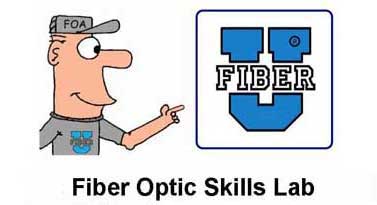Lesson:
How Fiber Works And How To Find Faults
Objectives:
From this lesson you should learn:
How fiber transmits light
How a visual fault locator (VFL) can be used to
troubleshoot fiber optic cable
How fiber transmits signals as pulses of light
Tools:
Safety Glasses
Visual Fault Locator (VFL)
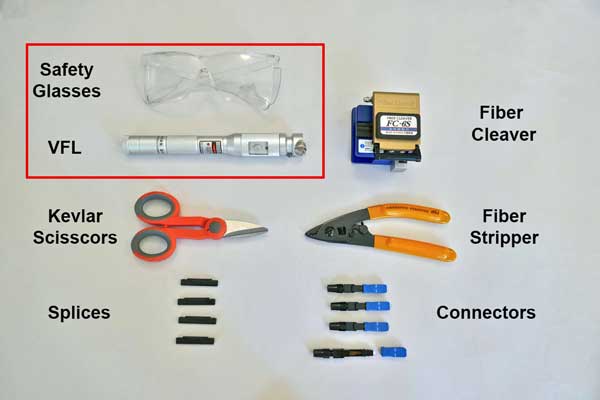
Components:
Fiber optic cable
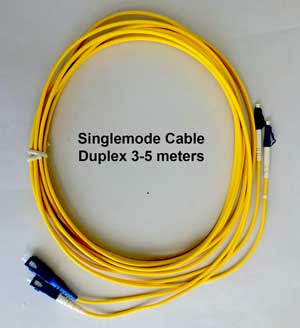
Safety:
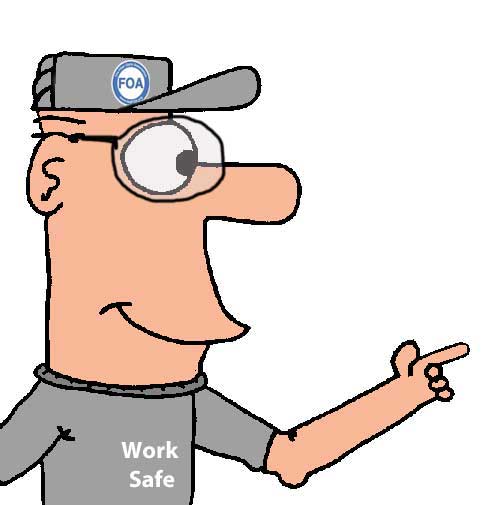 |
Always
wear safety glasses when doing any of
these exercises and dispose of all fiber
scraps properly.
Safety
Rules - Read before beginning any
exercises.
Do
not look directly into the light from the
visual fault locator - it's bright!
|
Exercise
1: Attach
your cable to the Visual Fault Locator (VFL)
2. Turn the VFL on and note how the light travels through
the fiber. You can see how bright the glow is at the end
of the fiber, diffused through the fiber protective cap.
This shows how fiber transmits light by total internal
reflection as you learned in the lesson on optical fiber.
3. Gently put bends in the cable and see what happens. The
glow you see is the light lost in the bend you caused.
Stress on a fiber can cause loss and the lost light shines
through the jacket of the fiber.
4. Remove the bend on the cable and see how the light
disappears when you remove the stress on the fiber. Look
closely and you can probably see how the light at the end
of the fiber changes as you cause light loss at the bend
you put in the fiber.
5. In later lessons you will see how we use visual light
from the VFL to help in splicing and terminating.
Watch this to see how it's done:
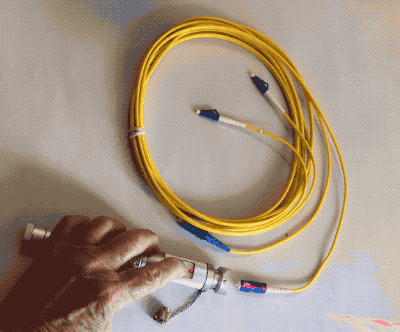
6. The VFL has both continuous and pulsed modes to help
locate fibers and find faults. That helps us understand
how fiber optics sends communications with light.
7. Change the VFL mode from continuous light to pulsed
using the switch on the unit. Now you can see how the
light is pulsed - the VFL is sending pulses of laser light
down the fiber which you can see at the far end. That's
the same way fiber optic communications systems work -
sending pulses of light - digital 1s and 0s - that are
encoded digital data. The big difference in that a fiber
optic communications system is transmitting pulses at
millions or billions of times faster than the VFL! And
it transmits infrared laser light invisible to the human
eye.
Watch
this to see how it's done:
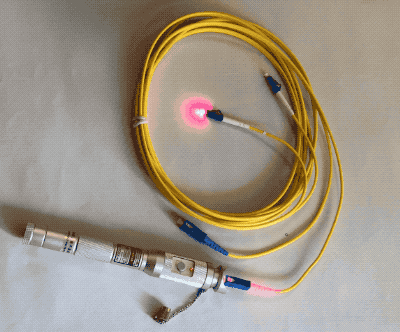
You
have successfully completed this exercise
when you have observed the use of the VFL to
show how fiber transmits light and
communications signals as pulses of light.
Complete the exercise and fill in your Scorecard.
Return
to Lesson Plan
This information is
provided by The Fiber Optic Association, Inc. as a
benefit to those interested in teaching, designing,
manufacturing, selling, installing or using fiber optic
communications systems or networks. It is intended to be
used as an overview and/or basic guidelines and in no
way should be considered to be complete or
comprehensive. These guidelines are strictly the opinion
of the FOA and the reader is expected to use them as a
basis for learning, as a reference and for creating
their own documentation, project specifications, etc.
Those working with fiber optics in the classroom,
laboratory or field should follow all safety rules
carefully. The FOA assumes no liability for the use of
any of this material.
|
